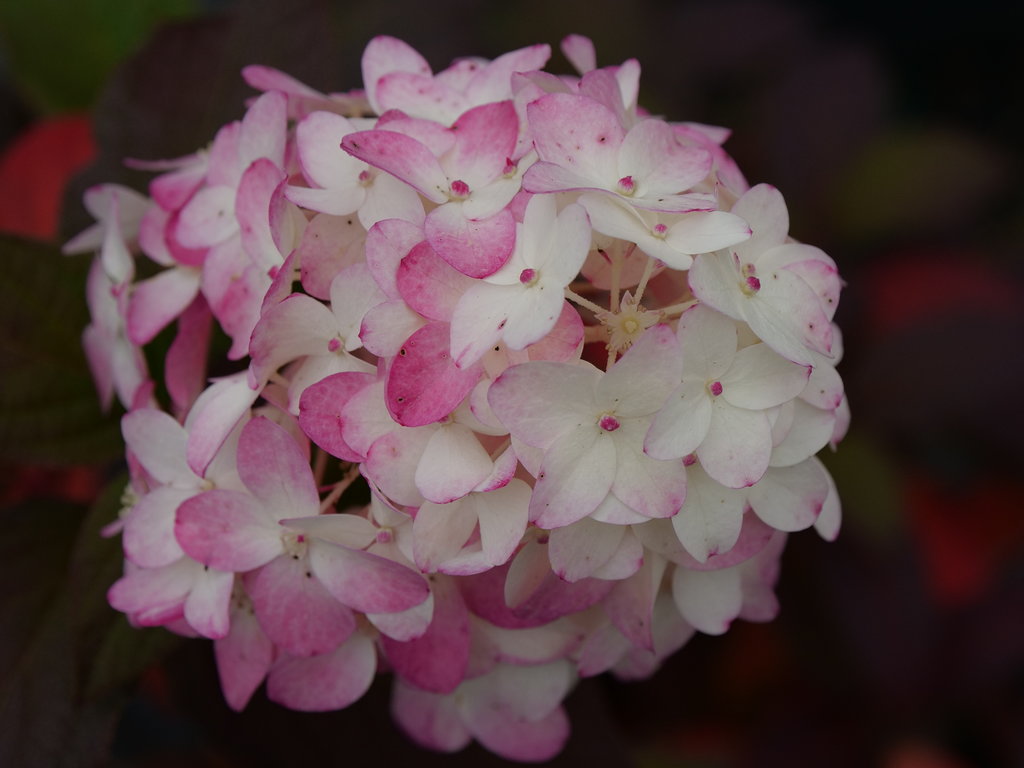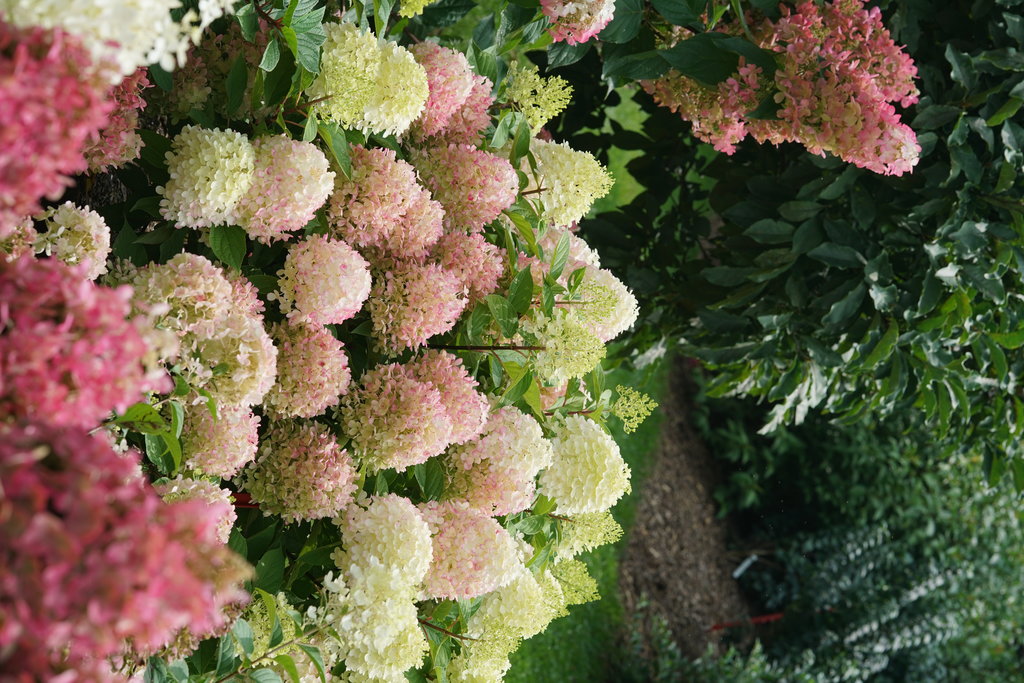The Tiny Hydrangea That Packs A Big Punch
The Tiny Hydrangea That Packs a Big Punch
Hydrangeas are some of the most popular flowering shrubs in the world, and for good reason. They come in a wide variety of colors, sizes, and shapes, and they can be found in gardens all over the globe. But what if you don't have a lot of space? Or what if you're looking for a hydrangea that's a little bit different?
If so, then you might want to consider the Little Lime Punch hydrangea. This diminutive shrub is only about 3 feet tall and wide, making it perfect for small gardens or containers. But don't let its size fool you. Little Lime Punch packs a big punch when it comes to blooms.
The flowers on Little Lime Punch start out as a bright lime green color, and then they gradually change to pink, white, and red as the season progresses. This makes them a real showstopper in the garden, and they're sure to turn heads.
In addition to their beautiful blooms, Little Lime Punch hydrangeas are also relatively easy to care for. They prefer full sun, but they can tolerate some shade. They also need well-drained soil, and they should be watered regularly.
If you're looking for a beautiful and easy-care hydrangea for your garden, then Little Lime Punch is a great option. It's the tiny hydrangea that packs a big punch!
Here are some additional details about Little Lime Punch hydrangeas:
- They bloom from early summer to late summer.
- They are hardy in USDA zones 5-9.
- They are drought-tolerant once established.
- They are deer-resistant.
Here are some tips for planting and caring for Little Lime Punch hydrangeas:
- Plant in full sun or partial shade.
- Amend the soil with compost or peat moss.
- Water regularly, especially during the first year.
- Fertilize in early spring with a balanced fertilizer.
- Deadhead spent flowers to encourage more blooms.
Little Lime Punch hydrangeas are a great addition to any garden. They're beautiful, easy to care for, and they're sure to add a touch of color to your landscape.
If you're looking for a beautiful, compact hydrangea that's easy to grow, then you need to check out Firelight Tidbit®. This stunning shrub is the smallest panicle hydrangea on the market, reaching just 2-3 feet tall and wide. But don't let its size fool you - Firelight Tidbit® packs a big punch in the flower department. Its large, mophead blooms emerge white in mid-summer and gradually change to pink and red as the season progresses.
Firelight Tidbit® is a versatile plant that can be used in a variety of settings. It's perfect for the front of the border, in containers, or as a specimen plant. It's also deer-resistant and drought-tolerant, making it a great choice for low-maintenance gardens.
If you're interested in learning more about Firelight Tidbit® hydrangea, I encourage you to visit . This website has a wealth of information about the plant, including its care requirements, planting tips, and more.
FAQ of firelight tidbit hydrangea
Q: What is a Firelight Tidbit hydrangea?
A Firelight Tidbit hydrangea is a compact, deciduous shrub that is known for its beautiful, colorful flowers. The flowers are typically white in the spring, but they turn pink or red in the summer. Firelight Tidbit hydrangeas are relatively easy to care for and can be grown in USDA hardiness zones 4-9.
Q: How do I care for a Firelight Tidbit hydrangea?
Firelight Tidbit hydrangeas prefer full sun to partial shade and well-drained soil. They should be watered regularly, but they are not tolerant of wet feet. Fertilize Firelight Tidbit hydrangeas in early spring with a balanced fertilizer. Deadhead spent flowers to encourage new blooms.
Q: What are the most common problems with Firelight Tidbit hydrangeas?
The most common problems with Firelight Tidbit hydrangeas are leaf spot, powdery mildew, and aphids. Leaf spot is a fungal disease that can cause brown or black spots on the leaves. Powdery mildew is a fungal disease that can cause a white, powdery coating on the leaves. Aphids are small, sap-sucking insects that can cause the leaves to curl and wilt.
Q: How do I prevent problems with my Firelight Tidbit hydrangea?
To prevent problems with your Firelight Tidbit hydrangea, you can:
- Water regularly, but do not overwater.
- Fertilize in early spring with a balanced fertilizer.
- Deadhead spent flowers to encourage new blooms.
- Prune in late winter or early spring to remove dead or damaged branches.
- Inspect your hydrangeas regularly for signs of pests or diseases.
Q: How do I propagate a Firelight Tidbit hydrangea?
Firelight Tidbit hydrangeas can be propagated by rooting cuttings in the spring or summer. To root cuttings, you will need to:
- Take 4-6 inch cuttings from healthy, non-flowering stems.
- Remove the bottom leaves from the cuttings.
- Dip the cuttings in rooting hormone.
- Plant the cuttings in a well-draining potting mix.
- Keep the potting mix moist.
- Place the cuttings in a warm, bright location.
Image of firelight tidbit hydrangea
5 different images of "firelight tidbit hydrangea" from Pinterest:
- A full-blooming Firelight Tidbit hydrangea in a garden. The flowers are a beautiful shade of pink and white, and they are arranged in a cascading display.

- A close-up of the flowers of a Firelight Tidbit hydrangea. The flowers are delicate and intricate, with a soft, fuzzy texture.

- A Firelight Tidbit hydrangea in a pot on a patio. The plant is healthy and well-maintained, and the flowers are in full bloom.

- A Firelight Tidbit hydrangea in a woodland setting. The plant is surrounded by lush greenery, and the flowers are a beautiful contrast to the dark green leaves.
- A Firelight Tidbit hydrangea in a vase on a table. The flowers are arranged in a simple vase, and they add a touch of elegance to the tablescape.

Post a Comment for "The Tiny Hydrangea That Packs A Big Punch"